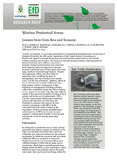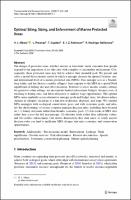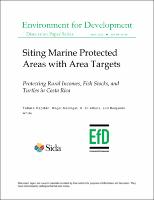Browsing by Subject "AREAS MARINAS PROTEGIDAS"
Now showing items 1-4 of 4
-
Marine protected areas in Costa Rica: How do artisanal fishers respond?
(2017)Costa Rica is considering expanding their marine protected areas (MPAs) to conserve marine resources. Due to the importance of households’ responses to an MPA in defining the MPA’s ecological and economic outcomes, this ... -
Marine Protected Areas: Lessons from Costa Rica and Tanzania
(CATIE, Turrialba (Costa Rica), 2015-07-22)Both Tanzania’s and Costa Rica’s beaches provide important nesting sites for endangered sea turtles. Poaching of eggs by local people for food or for sale presents a major threat to these species, as do other predators. ... -
Optimal Siting, Sizing, and Enforcement of Marine Protected Areas
(2020)The design of protected areas, whether marine or terrestrial, rarely considers how people respond to the imposition of no-take sites with complete or incomplete enforcement. Consequently, these protected areas may fail to ... -
Siting Marine Protected Areas with Area Targets Protecting Rural Incomes, Fish Stocks, and Turtles in Costa Rica
(2020-04)With many countries seeking to increase the area conserved in marine protected areas (MPAs) to achieve the Convention on Biodiversity’s protected area targets by 2020, we employ a bioeconomic model to determine which ...





